Dressing The Man
Alan Flusser’s Dressing the Man is widely considered to be the single best book on how to wear tailored clothing. It was published in 2002, about a decade after Levi’s promoted the idea of Casual Friday to help sell their line of downmarket chinos, and a few years before the hashtag menswear movement, which ultimately died around 2015. The book repeats the same ideas that Flusser has been promoting since the early 1980s. His other books have similar-sounding titles: Making the Man, Clothes and the Man, and Style and the Man. All of these books revolve around the idea that you can dress in a relatively timeless and flattering way if you pay attention to some ideas about fit, proportions, and color.
As a title, Dressing the Man suggests more than what you’ll find in the book. The book is actually about how to dress the body, not necessarily a person’s identity or lifestyle. In other words, it’s not about dressing the totality of a man, but just his physical form. This isn’t to fault Flusser. For all the books written on fashion, few, if any, actually talk about how to dress for the more intangible dimensions of a person’s life. Esquire’s Handbook of Style is one of the best primers on men’s style. It covers everything from tailoring to casualwear, but even the book’s editors don’t discuss how to dress for one’s personality. And how could they? Fashion writers assume that readers will figure this part out for themselves.
This is one of the problems that runs through nearly every online discussion about men’s style. Men from dramatically different backgrounds, locations, lifestyles, age groups, and other demographic dimensions argue about how others should dress. People who are overly prescriptive about style often fail to consider that there are many lifestyles and identities nowadays. Style is fundamentally about social language, and clothing is deeply connected to identity.
I want to talk about two people whose style I’ve admired online, as a way to discuss the broader idea of “dressing the man.” The first is Mitchell Moss, the author behind the excellent blog Menswear Musings. The second is Marco Martinez, a motorcyclist, tech analyst, and champion of berets. Both men are tremendously stylish and about the same age. Mitchell is 34 years old; Marco is 28. Yet, they live very different lives. Their dress habits are a reflection of those differences.
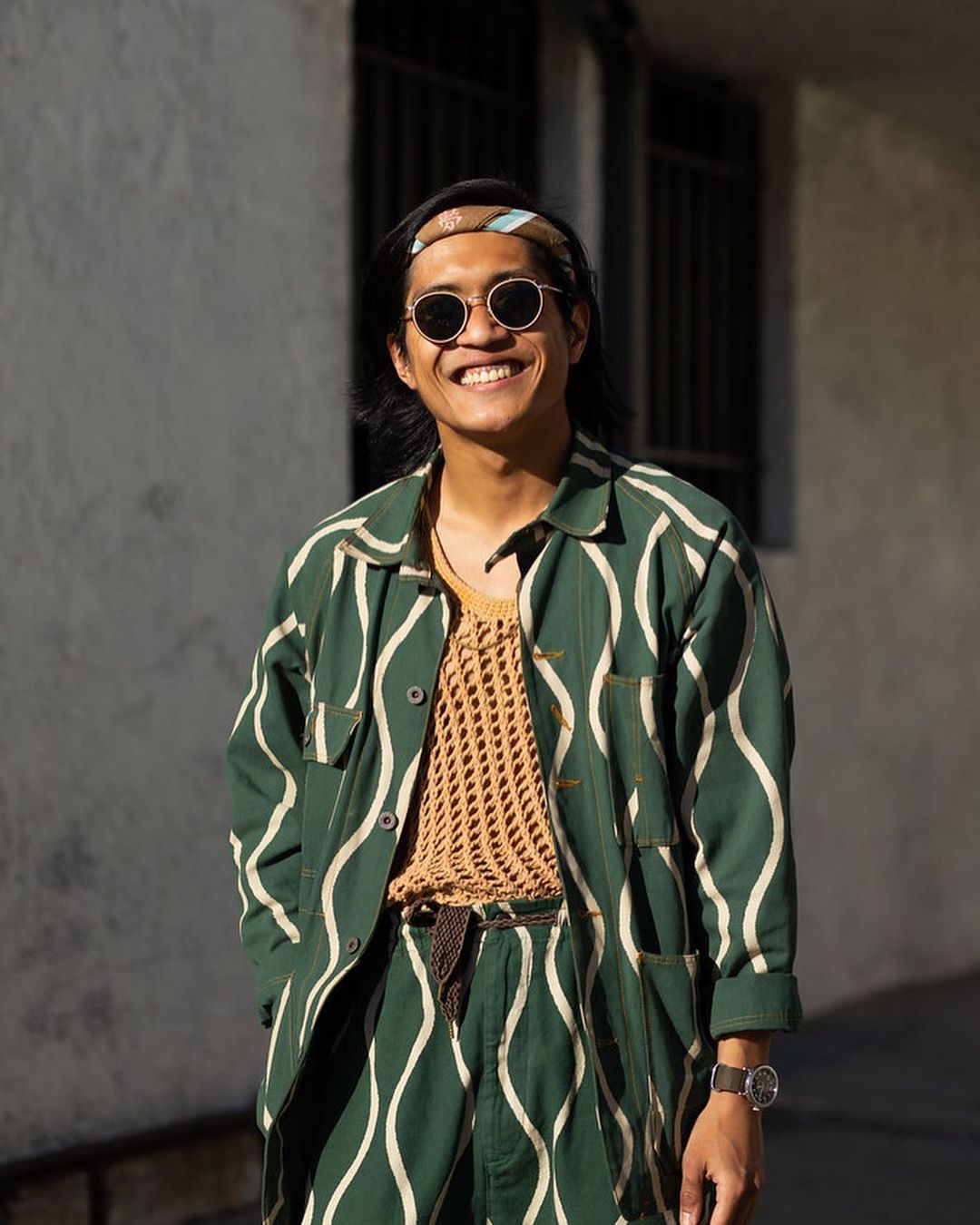


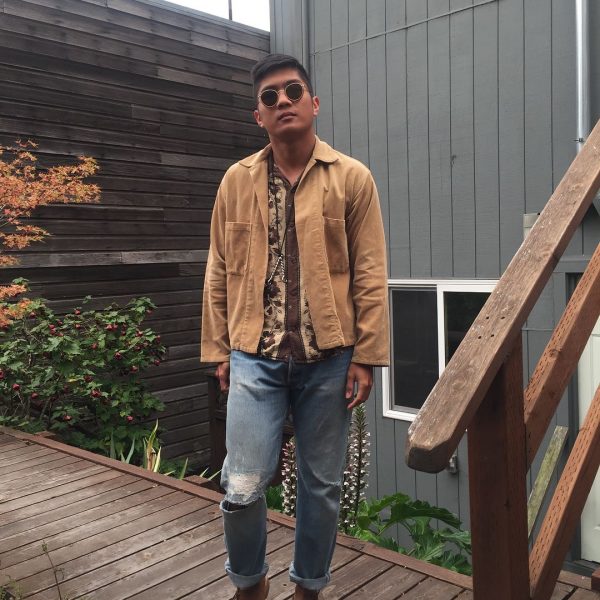
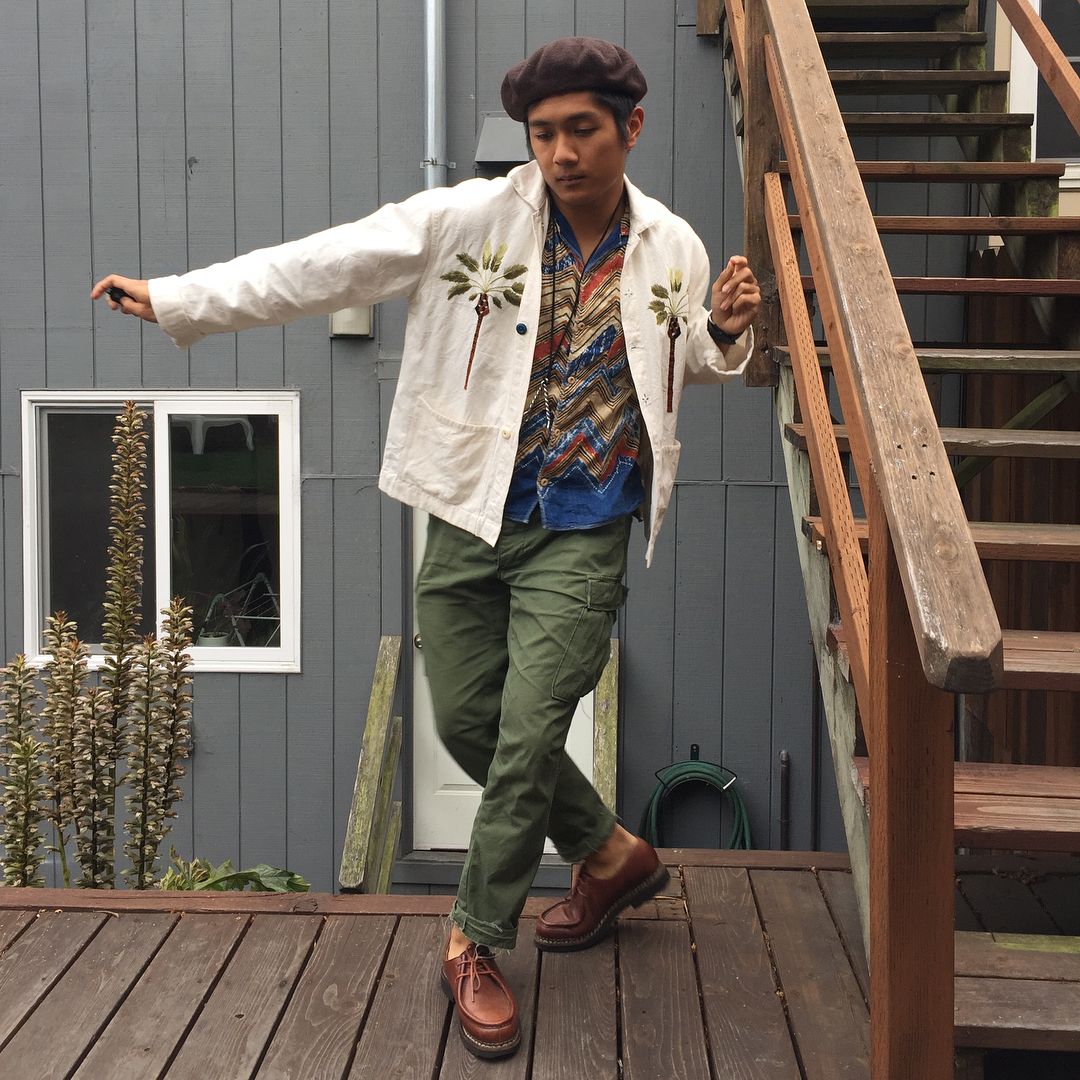







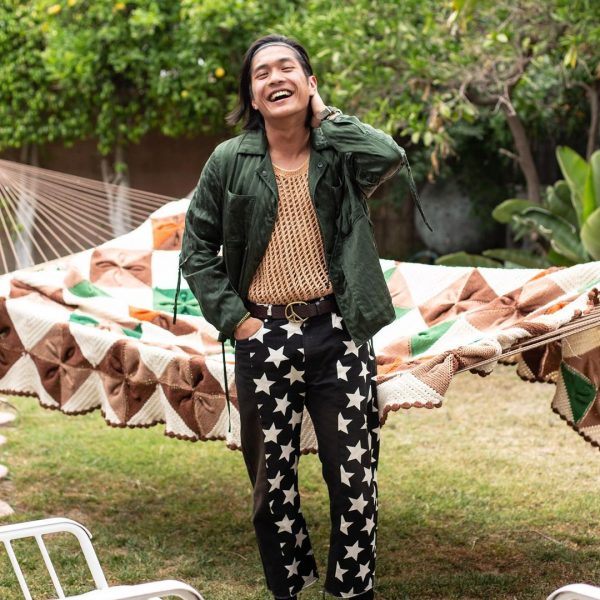


Marco lives in Los Angeles and works as a research analyst for Twitter. He’s an avid motorcyclist, drives a Yamaha Scrambler 950cc, and attends warehouse parties on weekends. About ten years ago, he got into breakdancing and then choreo. A few years later, he also picked up waacking, a form of street dancing that emerged out of LGBTQ+ clubs during the 1970s. “Waacking riffs on Golden Age Hollywood films and kung fu movies,” Marco explains. “So people threw their hands in the air in this very expressive manner.” Nowadays, Marco still loves dancing, but he does so in a way that blends various forms — breaking, waacking, and his new obsession, house. You can see some of his dance videos on Instagram (warning: they will make you want to get up and dance, so only watch in a clutter-free, open space).
Marco became interested in clothes when he was still an undergraduate student at Wesleyan. Inspired by Jean-Luc Godard films and old cinema, he wore button-down shirts, silk neckties, and even wide-brimmed fedoras. “I wore those clothes to college parties because I wanted to look dapper,” he says. “In hindsight, it was kind of embarrassing.” After graduating from college, he relocated to San Francisco, where he found himself sifting through the racks of discounted, second-hand designer clothes at Wasteland. Through online forums and a Discord server, he also found out about hard-to-find Japanese labels, such as Orslow, A VONTADE, ts(s), and companies that he describes as being “Engineered Garments adjacent.” “That’s when a whole new world of possibilities opened up for me.”
“In the beginning, I thought that if I had the right pieces or brands in my wardrobe, I would be happy or comfortable in my style,” he says. “But the clothes just didn’t fit who I am or my situation. Context is always important because you want to show up as yourself, not a set of clothes. I think the things in my wardrobe now are more reflective of how I see myself, and how my friends perceive me, as well.”

Marco struggles to find words to describe his style. He’s long abandoned the “dapper” look, and no longer tries to dress like a character in a French New Wave film. If he had to point to a style inspiration, he says he likes Uma Thurman’s yellow tracksuit in Kill Bill. “There is something about that look that is both sexy and utilitarian,” he says, “and I feel very drawn to that right now.”
He wears trackpants of his own these days — the famous butterfly embroidered, retro-striped trackpants from Needles. “I dismissed those for a long time as being a hyped streetwear item, but during the quarantine, I bought a pair from a friend because the price was right. It turns out, I love them. When I put them on, I was like, ‘OK, this makes sense.’ They have the best silhouette and match comfort with utility. I’ve since bought two more pairs of Needles pants — a pair of velvet climbing pants with a dark brown paisley pattern, and then a pair of faux-leather, python-embossed pants.”
Some of Marco’s other go-tos include a mutton fleece rider jacket (pictured above), star-motif pants from Arts in Education (also pictured above), a drunk striped “work suit” from Kapital, and a vintage pair of black Tyrolean shoes by Galibier. “I’m also really loving all of my Bode pieces,” he says. “I think Bode has brought me back into this New Americana look. They make unique, one-off pieces using found fabrics. And I love my ribbed tank tops from Calvin Klein. They’re the perfect base layer for Los Angeles. They allow me to enjoy layers and outerwear without sacrificing comfort.”



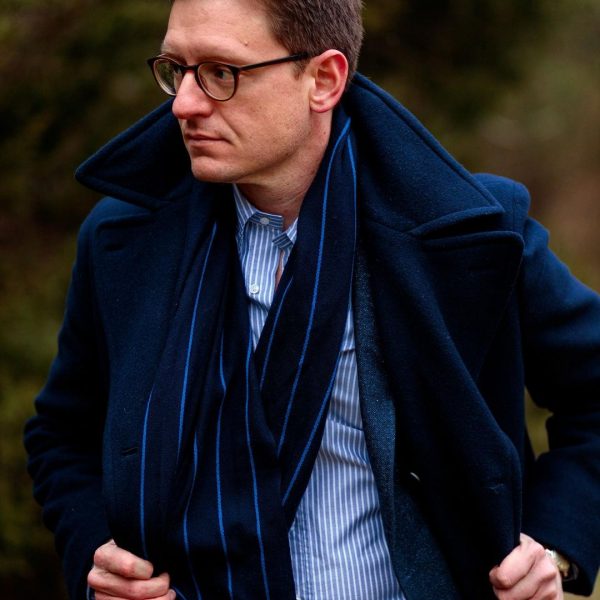


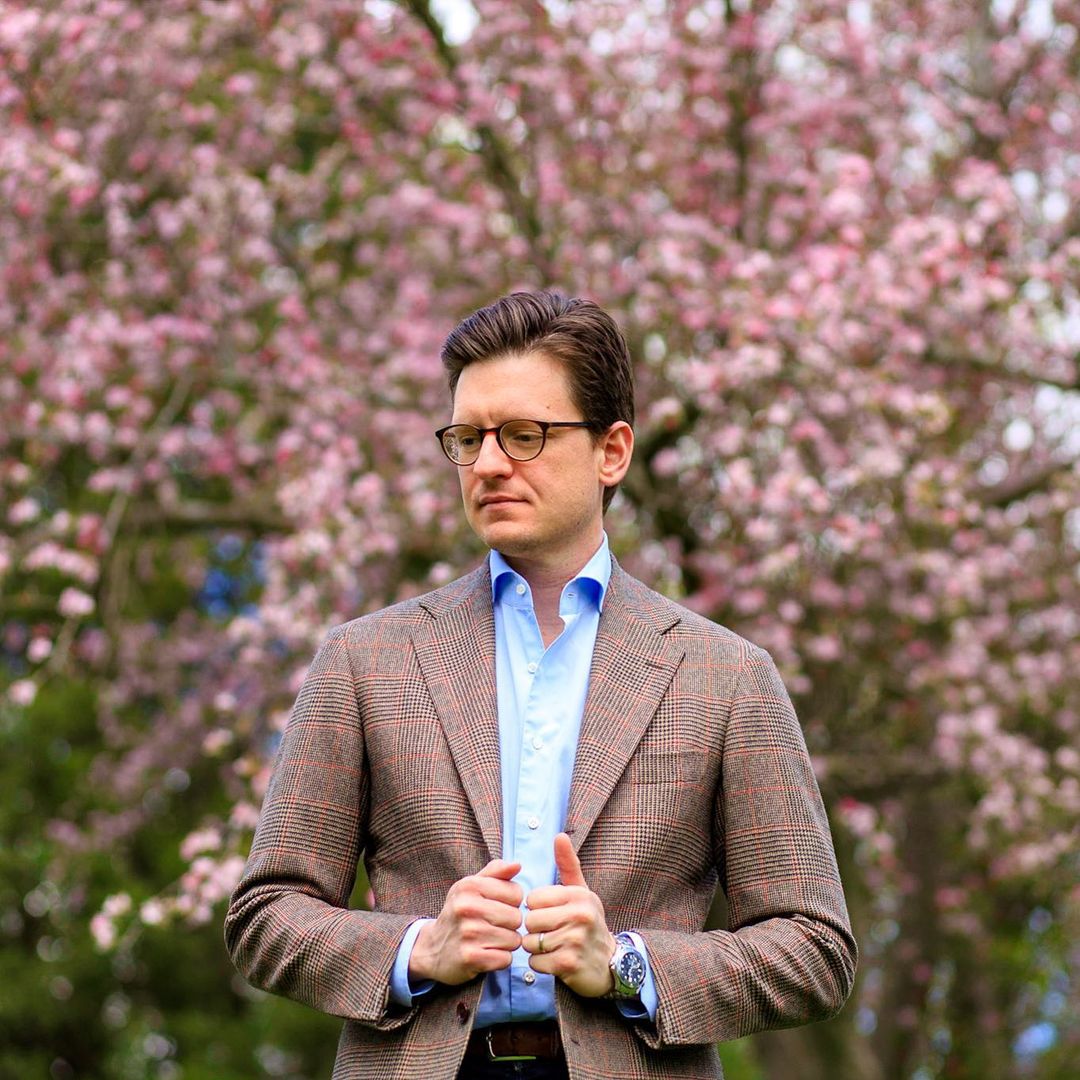








By contrast, Mitchell of Menswear Musings lives a much more conservative lifestyle. Having grown up in the midwest, he moved to a town just outside of Nashville a few years ago, where he and his wife raise two young sons. He also works for a church organization, helping them with their writing, editing, and design. He spends his time working on his menswear blog and playing the piano. About once a year, he and his family enjoy traveling abroad. “I’m not a city kid at heart,” he laughs.
Mitchell’s style will be more familiar to long-time readers of Put This On. He wears soft-shouldered sport coats that ride the thin line between modern and traditional. His navy raw silk sport coat from Eidos, navy double-breasted from Ring jacket, and “modern tweeds” from Eidos and Natalino aren’t as fashion-forward as what you’d get from Thom Browne, but also not as fuddy-duddy as Cordings. Keen-eyed readers will notice small details in Mitchell’s outfits that recall some things that menswear obsessives talked about ten years ago, when Mitchell first started seriously getting into tailored clothing. His sport coats have a curvier silhouette, sweeping quarters, and lapels that are either razor straight or slightly concave (a style that’s influenced by both Neapolitan and Florentine tailoring). He also enjoys wearing tall collars and Eidos’ long-sleeved polos. Yet, even with the subtle echos of hashtag menswear, Mitchell has avoided the worst trends: cutaway collars, skinny clothes, flannel cargo pants, and incongruent layering.
Some of this success is due to Mitchell’s conservative nature. Ultimately, he knows what he likes and is reluctant to venture too far. When I ask him what are some styles he’s experimented with in the past — whether successfully or not — his answers are almost comically strained. There was a uniquely trimmed t-shirt, which he ultimately gave to his wife. And yes, the requisite pair of double monks that everyone had to own (by law) around 2010 (“those shoes taught me that I don’t like calfskin as much as suede”). More recently, a friend gave him some free shirts, including a chambray Western shirt by Bryceland’s. “That experiment has been much more positive,” he says, “Like everyone, I’ve noticed that guys such as Ethan Newton and Simon Crompton have been wearing Western denim shirts, often with tweed. I wasn’t sure about the combo for myself. But when a friend gave me these shirts, I tried them on with a tweed sport coat and thought, ‘wow, this is sweet!’ It’s funny because I think I’m just not very experimental.”

“When I first joined StyleForum, I saw a lot of new members spending a ton of money on clothes,” he says. “This was around 2008, so during the Great Recession and around the time when there were still epic sales. So perhaps they were buying things at a discount. But they were buying expensive, high-quality brands, such as Ralph Lauren Black Label, Borrelli, and Cucinelli. But then, their style would suddenly change, and it seemed like they were wasting money. I think I was saved from that because I’ve never made that much money, so I couldn’t afford that stuff in the first place. But seeing that also made me a more methodical shopper. I learned from other people’s experiences and was careful not to get hung up on labels or ideas about ‘quality.’ I made a list of things I wanted each year and prioritized my purchases.”
Since Mitchell lives in a small town and works in a business casual environment, he likes to dress down his tailoring. He wears his sport coats with slim-straight jeans, some of which are from shockingly affordable brands such as American Eagle (the blue-washed jeans are AE; the white jeans are from Sid Mashburn). He mostly wears long-sleeved, pique cotton polos and oxford button-downs (including some from our sponsor Proper Cloth), and he favors the more casual suede leather shoes over finer, dressier calfskin.
The thing I love most about Mitchell’s style is that it’s so at home for someone of his background, age, and environment. His blog is a good guide for how younger men can wear classic clothing in a way that feels relevant, but without losing the spirit of what makes classic tailoring so great. “I like things that feel fresh and contemporary, but not trendy,” Mitchell says. “I think part of it is about being honest about how you look in your clothes. I tried those cropped, no-break pants and super short jackets, and I just didn’t like how they looked on me.”


Classic style holds a special place in menswear. As a result of the history of men’s dress, it’s the lingua franca of style — something that everyone can understand. But just as British English has Received Pronunciation, there are also regional dialects that may be more authentic to you. It’s hard to imagine Marco in Mitchell’s wardrobe, and vice versa. Each person’s wardrobe perfectly fits their lifestyle, personality, and background. This isn’t to say that you have to dress according to stereotypes. Some of the most interesting expressions come through people breaking stereotypes — young people in tassel loafers, older men in streetwear, masculine men in feminine clothes, feminine men in masculine clothes, etc. It’s only to say that style is a language, and dressing well is often about dressing for the totality of the person, not just the physical form.
Marco and Mitchell share one outfit: Barbour. When the weather is wet and gloomy, both slip into the waxed cotton Barbour jackets they bought many years ago. Mitchell says he wears his Barbour Ashby with blue jeans, cream-colored turtlenecks, and suede Astorflex chukkas. Marco’s version is surprisingly not too different, but tweaked just enough to be “Marco.” When it rains, he wears a sage green Barbour Beaufort with Wallace & Barnes carpenter jeans, a chunky turtleneck, boiled wool Kapital scarf, bucket hat, and some Blundstones or Tyrolean shoes. He’s decorated his Beaufort’s collar with some pins that he’s collected over the years. “It’s funny how I revert to those classic pieces when it’s about utility,” he says. “Barbour is just so classic, and you don’t have to overthink when wearing one. It has a ton of pockets and can be worn with anything.”
Marco and Mitchell’s Tips for Developing Personal Style
Marco: “I think knowing yourself is crucial to developing personal style. On the internet, you can find a ton of articles and YouTube videos about how to dress better. All these things talk about the things you need in your wardrobe, but they don’t talk about the journey. The rest of your style journey will be a lot like life: you might start with a plan, but then things might deviate. My advice is to know yourself, be prepared for disappointments and mistakes, and just throw yourself into the process. Don’t be scared of how other people might perceive you.”
Mitchell: “First, develop a sense of taste by consuming media, rather than feeling like you always have to buy new things. Save photos of outfits you like and think about why they look good to you. Revisit them every once in a while. Sometimes you’ll see something that looks cool, but then revisit the photo, and you’ll see small details that you overlooked before — things that might change your perception of the outfit. Second, be honest about how things look on you. No battle plan ever survives contact with the enemy, and no idea about style escapes contact with your actual body. The idea here is to develop your eye, try things on, and best honest about how you look.”
(You can follow Marco and Mitchell on Instagram. Mitchell also runs his own men’s style site, Menswear Musings)
The post Dressing The Man appeared first on Put This On.